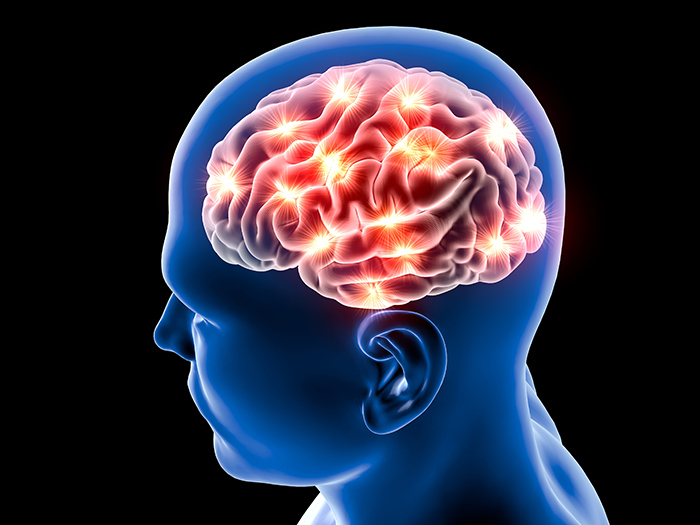The Prevalence of Neurological Disorders Pushes Scope of Wearable Medical Devices

Exciting new trends lie ahead for the wearable medical devices industry as its global adoption continues to soar. Millennials and concerned geriatric people are always on the lookout for the newest medtech gadgets, including wearables to track health vitals or daily activity. The popularity and adoption of these devices, especially for routine monitoring of body functions, will only increase as the burden of lifestyle-associated diseases surge.
Globally, the prevalence of cardiac problems, diabetes, hypertension and others has been increasing sharply. Each year, these diseases exert a significant economic burden on healthcare systems. Healthcare providers, public health agencies and government bodies are undertaking active measures to make people aware about timely and routine diagnosis. Increased budget for the latest tools and technologies to improve healthcare outcomes is augmenting the adoption of wearable devices.
Projections show that the global market for wearable medical devices could be worth more than $140 billion by the end of 2027, powered by continuous technological improvements, product innovations and increased acceptance in homecare as well as healthcare settings.
Activity and fitness monitors, cardiac monitors, respiratory monitors, diabetes devices, neurological monitors, hearing aids and body temperature monitors are among the most common wearable technologies used for medical applications. The following are some of the recent and ongoing developments in neurological monitoring devices and hearing aid technologies.
How are neurological monitors evolving with the rising disease burden?
The need for equipment that monitor neurological conditions or help in the early detection or diagnosis of these diseases is greater than ever. WHO has estimated the worldwide occurrence of neurological health problems could reach nearly 103 million by 2030.
Considering these factors, it is likely that neurological monitors could acquire a significant share of wearable medical devices industry by 2027. Manufacturers across the world are making continuous R&D efforts to meet the emerging demand. For instance:
- Last December IBM Research Australia introduced a wrist-worn device based on machine learning that can accurately detect different types of seizures. The technology facilitates the automatic detection of epileptic seizures using deep learning and wearable sensors and has the potential to revolutionize the management of epilepsy patients.
- In June 2021, California-based neurotechnology firm Inscopix, Inc. announced the demonstration of nVista, a miniature microscope-based wearable brain imaging device for non-human primate species. The technology will help monitor real-time neural activity and could accelerate the development of advanced precision interventions, including brain-computer interfaces (BCI), deep brain stimulation (DBS) and therapeutics for humans.
The wearable medical devices sector will continue to see many such innovations in coming years as manufacturers prepare to lead the space of health tech products.
How is the market for hearing aid devices faring?
Hearing loss is a major concern globally and it is affecting more and more people each year. By 2050, more than 2.5 billion individuals are likely to experience some degree of hearing loss or deafness, according to WHO.
The growing demand for innovative hearing enhancement equipment means that wearable medical device makers could generate substantial revenue from the hearing aids segment. New technologies are regularly entering the segment as manufacturers prioritize product innovation and regional penetration.
Personalization has emerged as a major trend in the hearing aids and numerous customizable solutions have been launched in the industry in the past year or so. The following are two such examples.
- Smart hearing solutions provider Eargo rolled out its latest connected hearing aids Eargo 5 in July. With new features and smaller specs, these hearing devices offer users the ability to customize their sound settings as per their preferences and environment. Users can establish a customized hearing profile using an in-app screening test designed by the company.
- Also in July, Alango Technoloiges, a supplier of hearing devices, launched a new advanced version of its hearing amplification headset BeHear ACCESS. The device can provide users with customized hearing amplification that they can self-tune in real time through the companion application.
In most conventional hearing aids utilized today, processing delay is a major issue. Traditional digital hearing aids may need 4–8 milliseconds to process sound and deliver the amplified audio to users. Wearable device manufacturers are exploring ways to minimize the delay and offer a seamless hearing experience to users.
In January, a team of engineers at Widex developed a hearing aid technology called Moment and powered by a unique ZeroDelay processing technology. Suitable for people with mild to moderate hearing loss, these hearing aids can reduce processing delay to just 0.5 milliseconds.
How is COVID-19 impacting the wearable medical devices market landscape?
The coronavirus pandemic has brought significant attention on the need to prioritize health. Healthcare wearables have emerged as an indispensable tool for enhancing bedside care for patients and safeguarding patients and staff from the virus.
The year 2020 witnessed several medtech players launching new wearable tech to help fight against the global pandemic. In May, for example, Philips received 510(k) clearance for its wearable Biosensor BX100. The device had also received the CE Mark. Biosensor BX100 is a wearable device that can be used to monitor and manage hospitalized COVID-19 patients across hospital rooms.
The COVID-19 crisis has also accelerated the use of body temperature, cardiac monitors, respiratory monitors, and diabetes devices as people with underlying health conditions face a greater risk of infection.
How will future trends in the wearable medical devices industry shape up?
For more than a decade, researchers have been using data acquired from wearable devices to find telltale signs that might help predict illnesses. As the burden of various chronic diseases increases, research and development using wearable tech will only gather pace. These technologies are constantly evolving and becoming more accurate and efficient.
Growing acceptance of wearables, increased reliance on these technologies in healthcare environments and improving economic conditions in developing countries will foster wearable medical devices market trends.